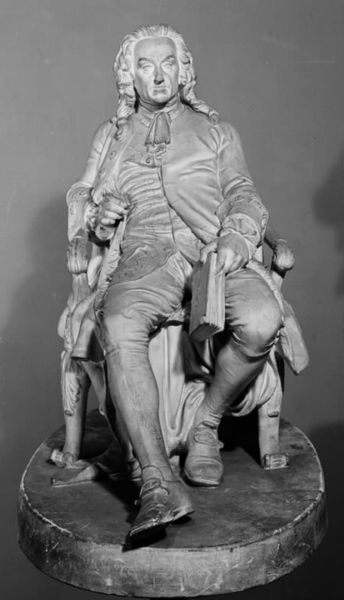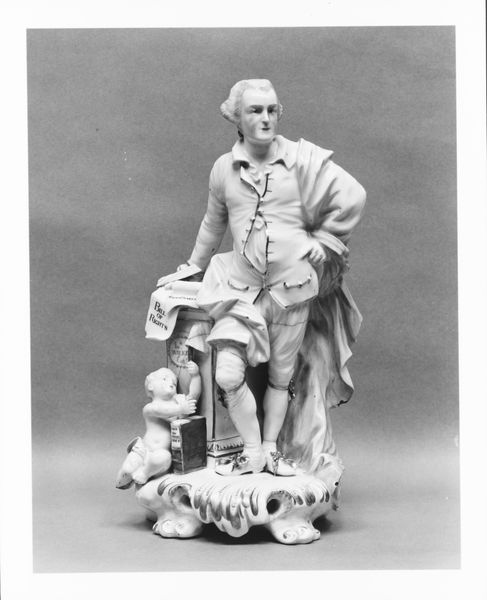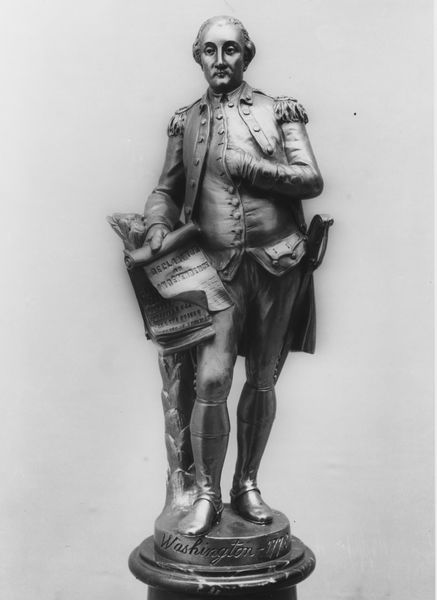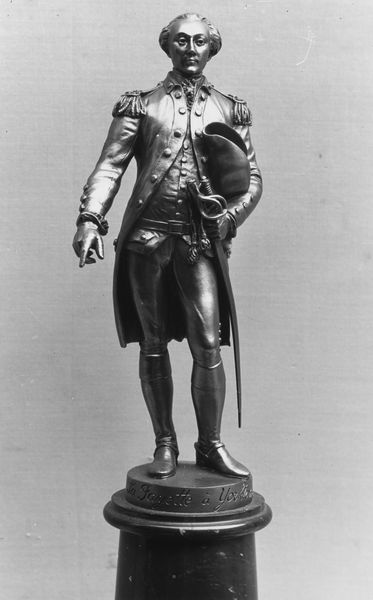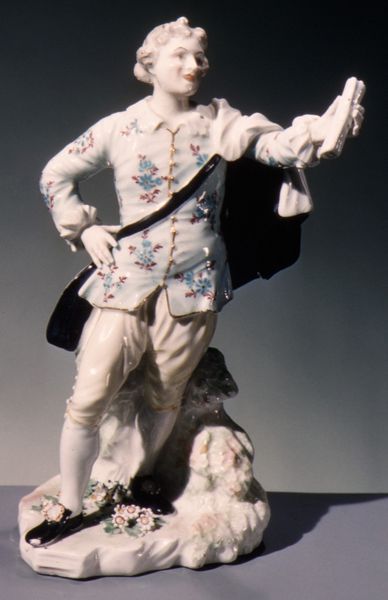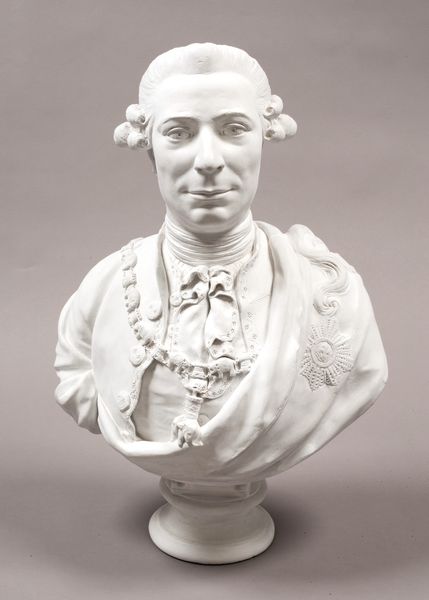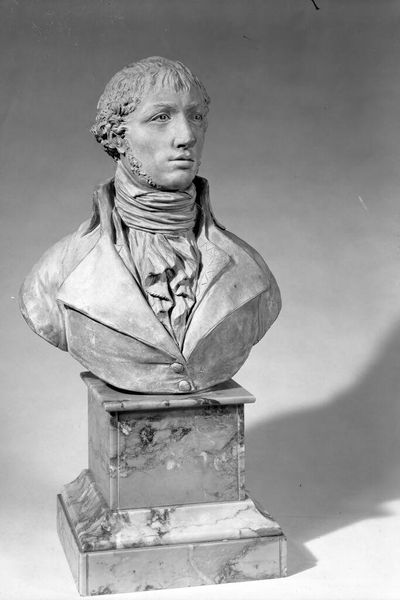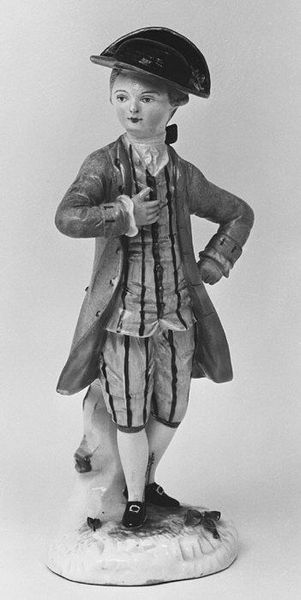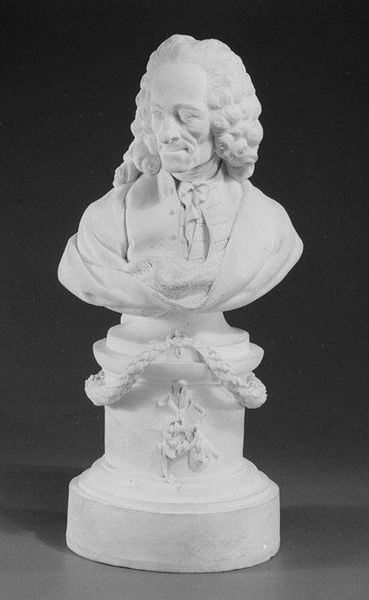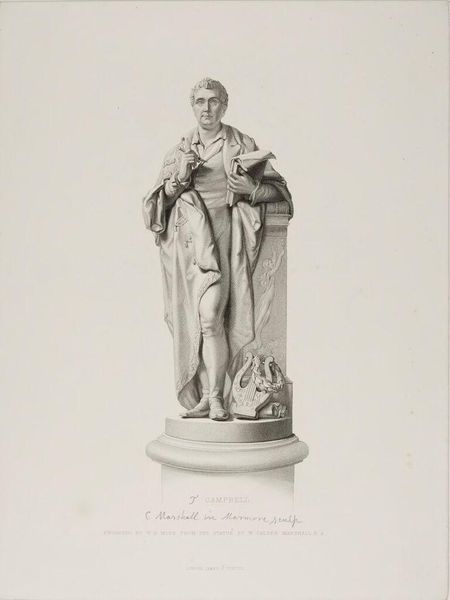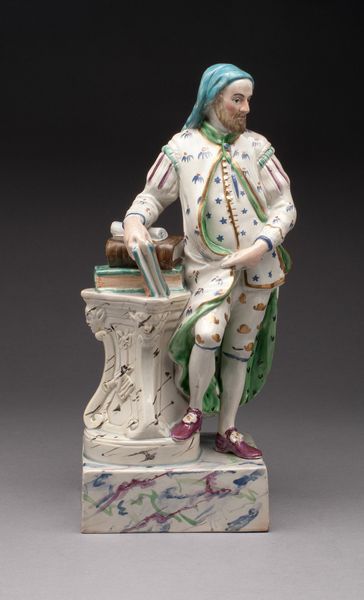
Dimensions: H. 13 1/4 in. (33.7 cm)
Copyright: Public Domain
This porcelain figure group was made at the Chelsea Factory in the mid-18th century, when the fashion for elaborate table ornaments was at its height. Porcelain, also known as ‘white gold,’ was notoriously difficult to make, involving the precise combination of rare ingredients and high firing temperatures. Notice how the crisp, white material allows for incredible detail, from the folds of the man’s coat to the delicate curls of the female figure’s hair. Such complexity demanded a division of labor, with different workers specializing in mold making, casting, assembly, and painting. The Chelsea Factory was one of the first in England to emulate the porcelain production of Meissen in Germany, and Sevres in France. Such figures were luxury commodities, designed to reflect the wealth and taste of their owners, and the advanced manufacturing capabilities of the factory that produced them. Appreciating the skill and complexity of such works allows us to see beyond traditional categories of “art” and “craft.”
Comments
No comments
Be the first to comment and join the conversation on the ultimate creative platform.
